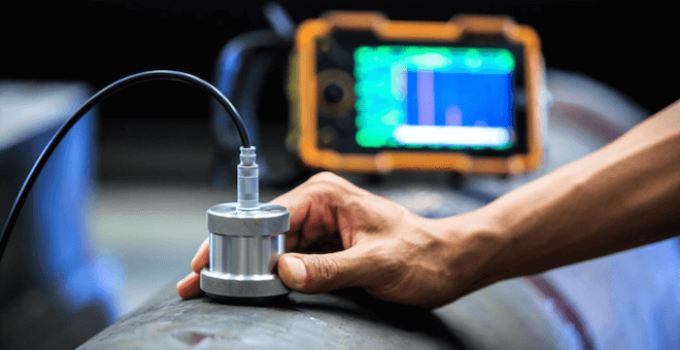Introduction to Testing Methods
When it comes to evaluating the integrity of materials and structures, testing is crucial. Testing methods generally fall into two categories: destructive and non-destructive. Each serves different purposes and has its own set of advantages and applications. Let’s dive into what each method involves and how they differ.
What is Destructive Testing?
Destructive testing refers to methods that destroy the material being tested to understand its properties and limits. Think of it as a trial by fire—literally. These tests are designed to push materials to their breaking points to ensure they can withstand real-world stresses. Examples include tensile testing, impact testing, and fatigue testing.
What is Non-Destructive Testing (NDT)?
On the other hand, non-destructive testing (NDT) allows us to inspect materials without causing any damage. It’s like having x-ray vision—you can see inside without breaking anything. NDT methods are crucial for maintaining the integrity of materials used in critical applications, such as aerospace and nuclear industries.
Destructive Testing: A Closer Look
Overview of Destructive Testing
Destructive testing involves testing a material to failure to gain insight into its strength, ductility, and other physical properties. This kind of testing is often used in the design phase of new materials or products.
Types of Destructive Tests
Tensile Testing
Tensile testing measures how a material reacts to forces pulling it apart. The material is stretched until it breaks, and data on its strength and elasticity are collected. This is often used for metals and polymers.
Impact Testing
Impact testing determines a material’s toughness by measuring its response to a sudden impact. It’s commonly used for metals and is crucial for applications where materials may face shock loads.
Fatigue Testing
Fatigue testing assesses how materials perform under cyclic loading. This is vital for materials that will experience repeated stress, such as in automotive and aerospace components.
Applications and Advantages of Destructive Testing
Destructive testing provides invaluable data on a material’s performance limits. It’s particularly useful in the development and quality assurance phases, ensuring that products meet safety and performance standards. However, it’s not always practical for every application due to the nature of the testing process.
Non-Destructive Testing (NDT): A Detailed Overview
Overview of Non-Destructive Testing
Non-destructive testing (NDT) involves inspecting materials without altering their structure or integrity. This is especially important for components that are already in use or where destruction is not an option.
Types of Non-Destructive Tests
Eddy Current Testing
Eddy current testing is a versatile method used to detect surface and near-surface defects in conductive materials. It works by inducing electrical currents in the material and measuring the resulting magnetic fields. This method is commonly used in aerospace and automotive industries. For detailed information on eddy current machines, you can visit Eddy current testing machine
Ultrasonic Testing
Ultrasonic testing uses high-frequency sound waves to detect internal flaws in materials. It’s widely used in various industries for its precision and depth penetration capabilities.
Radiographic Testing
Radiographic testing employs X-rays or gamma rays to produce images of the internal structure of materials. It’s used to find internal defects and is commonly applied in the inspection of welds and castings.
Magnetic Particle Testing
Magnetic particle testing is used to detect surface and near-surface defects in ferromagnetic materials. By applying a magnetic field and then spreading magnetic particles over the surface, flaws can be visualized.
Applications and Advantages of Non-Destructive Testing
NDT methods are invaluable for ongoing maintenance and safety inspections. They allow for the detection of flaws without the need for disassembly or destruction. This is crucial in industries where downtime or loss of materials can be costly.
Comparing Destructive and Non-Destructive Testing
Key Differences
The primary difference between destructive and non-destructive testing lies in the impact on the material. Destructive testing destroys the sample, providing detailed insights into its limits but not allowing for further use. Nuclear NDT solutions, however, preserves the material, making it ideal for ongoing evaluations and maintenance.
When to Use Each Method
Destructive testing is best used during the initial phases of product development to ensure materials meet performance criteria. NDT is used throughout the lifecycle of a product or structure to monitor and maintain its integrity.
Innovations and Future Trends in Testing
Advancements in Eddy Current Testing
Recent advancements in eddy current testing technology include improved sensitivity and the ability to detect smaller defects. Innovations are making these machines more efficient and versatile. For more on the latest in eddy current testing technology, check out Salem NDT.
Future of Non-Destructive Testing Technologies
The future of NDT lies in integrating advanced technologies such as artificial intelligence and machine learning to enhance defect detection and analysis. These advancements promise to make NDT even more effective and efficient.
Conclusion
Both destructive and non-destructive testing play crucial roles in material science and engineering. While destructive testing provides essential data for product development, non-destructive testing ensures ongoing safety and reliability. By understanding and utilizing these methods appropriately, industries can ensure their materials and products meet the highest standards of performance and safety.


